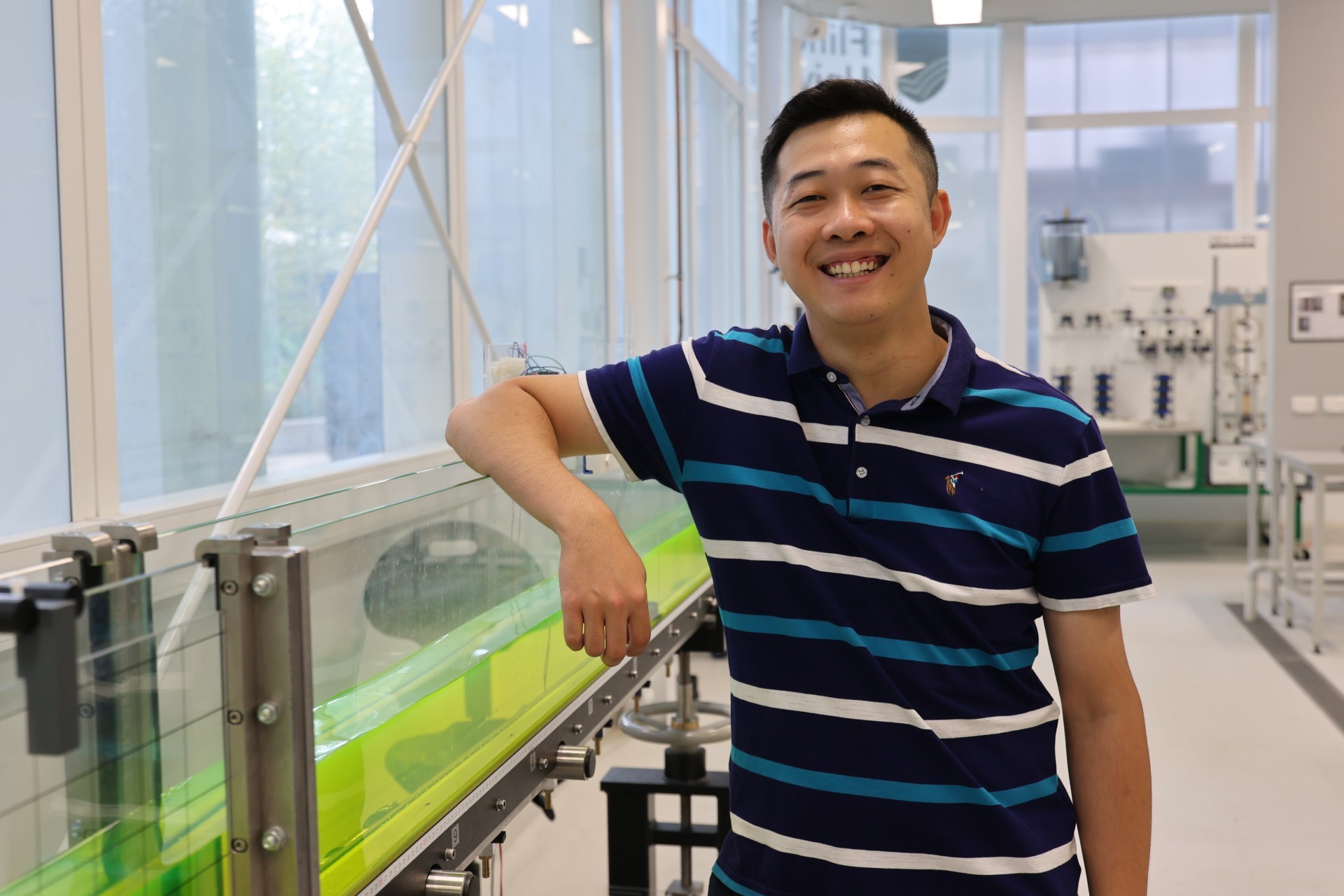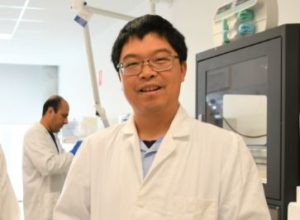
Green fields are opening around the world as researchers make inroads into improving efficiencies in more sustainable vehicles via a novel biofuel and power generation from the sea.
For example, Flinders University scientists have recently published results from three different studies – targeting potential methods and future technologies to capture ocean wave power efficiently, produce marine microalgae biofuel, as well as to improve catalytic conversion in engines.
Nanotechnology experts at Flinders University, including Professor Youhong Tang and PhD Steven Wang, with Chinese colleagues have developed a novel wave sensing device which is self-powered by harvesting energy from ocean waves.
The latest results, published in Device, prototypes a hybrid self-powered wave sensor (HSP-WS), consisting of an electromagnetic generator and a triboelectric nanogenerator.
"The test results show that HSP-WS has the sufficient sensitivity to detect even 0.5 cm amplitude changing of ocean wave," says PhD candidate Yunzhong (Steven) Wang, from Professor Tang' research group, who is based at Flinders University's Tonsley future energy hub.

Professor Tang says that "The data obtained from HSP-WS can be used to fill up the current gap in the wave spectrum which can improve ocean wave energy harvesting efficiency."
Ocean wave amplitude is a key parameter in the wave spectrum. The current wave spectrum does not support detailed wave data for wave amplitudes below 0.5 m. Common radar-based ocean data sensors struggle to monitor low-amplitude waves because the measured wave amplitude is often concealed by environmental noise.
The researchers add that low-amplitude-wave energy harvesters lack proper guidance for optimal placement, which significantly affects their energy-harvesting efficiency.
Meanwhile, nanoscale material scientist, Matthew Flinders Professor Tang, has joined forces with aquaculture expert Professor Jianguang (Jian) Qin and other Flinders University researchers to experiment with a new method to boost production of fast-growing, sustainable microalgae for biofuel or other feedstock.
"Mass production of microalgae is a research focus owing to their promising aspects for sustainable food, biofunctional compounds, nutraceuticals, and biofuel feedstock," says Professor Tang.
"For the first time, this study was able to enhance algal growth and lipid accumulation simultaneously, producing essential biomolecules for the third and fourth-generation feedstock for biofuel."

The novel approach creates an effective light spectral shift for photosynthetic augmentation in a green microalga, Chlamydomonas reinhardtii, by using an aggregation-induced emission (AIE) photosensitiser.
Professor of Aquaculture Jian Qin says industry-scale microalgae culture for lipid and biomass production is still a challenge.
"However, microalgae-derived polyunsaturated fatty acids (PUFA) remain a promising alternative to stock-limited fossil fuels for the recent price hike and future demand and for minimising carbon emissions with 10 to 50 times higher efficiency than terrestrial plants. PUFA also have health-promoting functions for biomedical and pharmaceutical applications," he says.
Another research group at Flinders University's College of Science and Engineering has published a paper about a promising new nanotechnology technique for more efficient use of fuels.
"The need for sustainable energy solutions is steering research towards green fuels," says Associate

Associate Professor in Chemistry Melanie MacGregor, from Flinders University. "One promising approach involves electrocatalytic gas conversion, which requires efficient catalyst surfaces."
"In this study, we developed and tested a plasma-deposited hydrophobic octadiene (OD) coating for potential to increase the yield of electrocatalytic reactions," she says.
"Our findings indicate that these nano-films, combined with micro-texturing, could improve the availability of reactant gases at the catalyst surface while limiting water access.
"This approach holds promise to inform future development of catalyst materials for the electrocatalytic conversion of nitrogen and carbon dioxide into green fuels."
References:
The article 'Plasma Coating for Hydrophobisation of Micro- and Nanotextured Electrocatalyst Materials' (2024) by Georgia Esselbach, Ka Wai Hui (UniSA), Iliana Delcheva, Zhongfan Jia and Melanie MacGregor has been published in the online journal Plasma. DOI: 10.3390/plasma7030039 9.
This research received funding from the Australian Research Council (FT200100301), Universities and State Government with support from Microscopy Australia at the Future Industries Institute, University of South Australia, and the SA node of the Australian National Fabrication Facility under the National Collaborative Research Infrastructure Strategy.
Also see 'Aggregation-induced emission photosensitiser boosting algal growth and lipid accumulation' (2024) by Sharmin Rakhi, AHM Mohsinul Reza, Brynley Davies, Jianzhong Wang (Jilin Agricultural University), Youhong Tang and Jianguang Qin has been published in Nano-Micro Small journal (Wiley).The authors acknowledge support from colleagues at the South China University of Technology and La Trobe University. This research did not receive any external funding.
The first article, 'A hybrid self-powered wave sensing device enables low-amplitude wave sensing' (2024) by Yunzhong Wang, Huixin Zhu (Tongji University), Wenjin Xing, Damian Tohl and Youhong Tang has been published in Device (Cell) DOI: 10.1016/j.device.2024.100575. This research did not receive any external funding.






